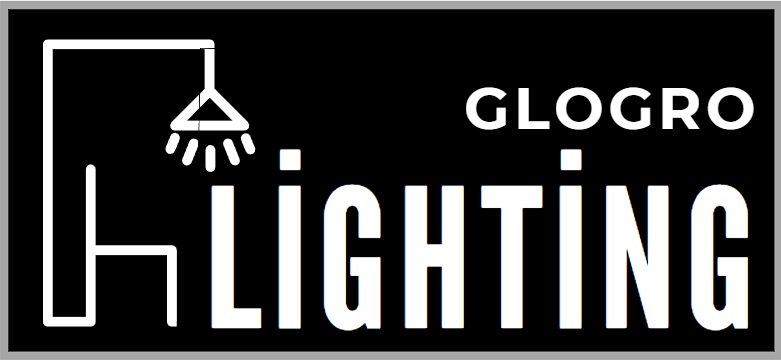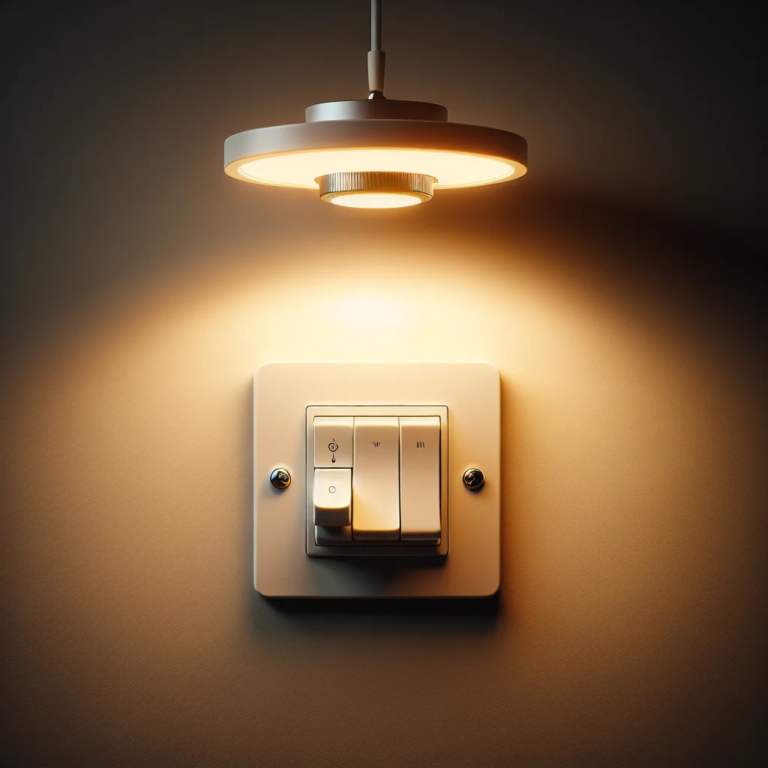Contents
- 1 Factors to Consider for Dimmable Ceiling Lights
- 2 Are All Ceiling Lights Dimmable?
- 3 How to Determine If Your Ceiling Lights Are Dimmable
- 3.1 Check the Packaging and Specifications
- 3.2 Inspect the Dimmer Switch
- 3.3 Test with a Dimmer
- 3.4 LED Compatibility
- 3.5 Consult the Manufacturer’s Guidelines
- 3.6 Verify the Bulb Type
- 3.7 Consider Professional Assistance
- 3.8 Summary
- 3.9 Summary of important points
- 3.10 Recommendations for choosing dimmable ceiling lights
- 4 Frequently Asked Questions
Factors to Consider for Dimmable Ceiling Lights
-
Are LED and halogen bulbs compatible with dimmable ceiling lights?
- Yes, LED and halogen bulbs are compatible with dimmable ceiling lights, providing seamless dimming capabilities and a warm glow.
-
Do existing light fixtures need to be compatible with dimmable bulbs?
- Yes, existing light fixtures need to be compatible with dimmable bulbs, and LED dimmer switches may be required for smooth dimming functionality.
-
Is additional wiring potentially needed for the installation of dimmable ceiling lights?
- Yes, additional wiring may be needed for the installation of dimmable ceiling lights to support the operation of newer dimming technology. Consulting with a qualified electrician is advisable to assess and address any potential wiring needs.
Types of bulbs that are dimmable
When considering dimmable ceiling lights, it’s vital to understand the types of bulbs that are compatible with dimming functionality. LED bulbs are a popular choice for dimmable ceiling lights due to their energy efficiency and versatility. These bulbs provide seamless dimming capabilities, allowing you to adjust the ambiance of your space to suit various activities, whether it’s hosting a dinner party or enjoying a cozy movie night. Additionally, halogen bulbs are another suitable option for dimmable ceiling lights, offering a warm and inviting glow that can be tailored to your preferences. It’s essential to choose dimmable bulbs specifically designed for the intended light fixtures to ensure optimal performance and longevity.
Compatibility with existing light fixtures
Before embarking on the journey of installing dimmable ceiling lights, it’s crucial to determine the compatibility of these lights with your existing light fixtures. LED dimmer switches are specially designed to work with dimmable LED bulbs, ensuring smooth dimming functionality without flickering or buzzing. Moreover, for traditional light fixtures, it’s necessary to verify whether they are equipped to support dimmable bulbs. Some fixtures may require an upgrade or retrofit to accommodate dimming capabilities, providing a seamless transition to a more customizable lighting experience.
Potential need for additional wiring
In the pursuit of embracing dimmable ceiling lights, it’s essential to assess the potential need for additional wiring to support the installation. Upgrading existing electrical wiring may be necessary to facilitate the operation of dimmable lights effectively. As dimming technology continues to advance, newer systems may require specific wiring configurations to deliver optimal performance. It’s prudent to consult with a qualified electrician to evaluate the electrical infrastructure and determine if any modifications are required to support the integration of dimmable ceiling lights seamlessly. By addressing potential wiring needs proactively, you can ensure a safe and efficient transition to a dynamic lighting environment.
Are All Ceiling Lights Dimmable?
Ceiling lights are a vital aspect of any room’s ambiance and functionality. When it comes to dimmability, it’s essential to understand the limitations and capabilities of different types of ceiling lights.
The limitations of dimmable options for different types of ceiling lights
-
LED Lights: LED ceiling lights are highly dimmable and provide exceptional flexibility in adjusting the lighting ambiance. However, not all LED lights are compatible with dimmers.
It’s crucial to ensure that the LED fixtures are specifically labeled as dimmable to avoid any potential issues.
-
Incandescent Lights: Traditional incandescent ceiling lights are generally dimmable, making them a popular choice for those wanting customizable lighting levels. However, the drawback is that they consume more energy compared to LED lights.
-
Halogen Lights: Similar to incandescent lights, halogen ceiling lights are often dimmable. These lights offer bright, crisp illumination and can be dimmed to create a cozy atmosphere.
However, they also consume more energy than LED lights.
Dimming capabilities of LED, incandescent, and halogen bulbs
-
LED: The dimming capabilities of LED bulbs vary based on their design and technology. When choosing dimmable LED ceiling lights, look for high-quality options equipped with advanced dimming technology to ensure smooth and consistent dimming performance.
-
Incandescent: Incandescent bulbs have a long-standing reputation for their compatibility with dimmer switches. They offer a wide range of dimming possibilities, allowing users to achieve the desired lighting levels with ease.
-
Halogen: Halogen bulbs are known for their excellent dimming capabilities, making them suitable for creating versatile lighting atmospheres in various spaces. It’s important to select dimmable halogen bulbs specifically designed to work seamlessly with dimmer switches for optimal performance.
While most ceiling lights can be dimmable, it’s crucial to pay attention to the specific type of bulb and its compatibility with dimmers to ensure the desired lighting experience.
How to Determine If Your Ceiling Lights Are Dimmable
Determining if your ceiling lights are dimmable is crucial for creating the perfect ambience in your living space. Follow these comprehensive steps to identify if your ceiling lights are dimmable.
Check the Packaging and Specifications
Start by examining the product packaging or specifications of your ceiling lights. Look for a clear statement indicating that the lights are dimmable. This information is usually found in the technical specifications or product description. If it clearly states that the lights are dimmable, you’re good to go.
Inspect the Dimmer Switch
Another way to determine if your ceiling lights are dimmable is by checking the type of switch being used. Dimmable lights require a compatible dimmable switch to control their brightness levels effectively. Most dimmable switches are clearly labeled as such, making them easy to identify.
Test with a Dimmer
If you’re still unsure, the most definitive method is to directly test the lights with a dimmer switch. Replace the standard on/off switch with a dimmer switch and observe how the lights respond.
Turn the switch to various positions to see if the lights can be dimmed effectively. If they dim smoothly without flickering or any issues, then they are indeed dimmable.
LED Compatibility
For LED ceiling lights, it’s vital to ensure that they are compatible with dimming. Not all LED lights are dimmable, so it’s important to look for specific dimmable LED lights when making a purchase. Manufacturers usually specify this on the packaging or product description.
Consult the Manufacturer’s Guidelines
If you’re still uncertain about the dimmability of your ceiling lights, it’s a good idea to consult the manufacturer’s guidelines or customer support. They can provide specific details about the dimming capabilities of the lights and recommend compatible dimmer switches for optimal performance.
Verify the Bulb Type
In some cases, the dimmability of ceiling lights depends on the type of bulbs being used. Certain bulbs, such as incandescent, halogen, and specific LED bulbs, are typically dimmable. Check the type of bulbs installed in your ceiling lights and verify their dimming compatibility.
Consider Professional Assistance
If you’re still unable to determine the dimmability of your ceiling lights, seek the advice of a professional electrician or lighting specialist. They can conduct thorough tests and assessments to ascertain if your lights are indeed dimmable and recommend suitable solutions if necessary.
Summary
Identifying if your ceiling lights are dimmable involves carefully examining the product specifications, testing with a dimmer switch, ensuring LED compatibility, and seeking guidance from the manufacturer or professionals. By following these steps, you can confidently determine the dimming capabilities of your ceiling lights to create the perfect lighting ambience in your home.
| Methods | Description |
|---|---|
| Packaging | Check for dimmable indication |
| Dimmer Switch | Verify compatibility of the switch |
| Test with Dimmer | Directly test the lights with a dimmer switch |
| LED Compatibility | Ensure compatibility of LED lights with dimming |
| Manufacturer’s Guidelines | Consult manufacturer’s guidelines for specific details |
| Bulb Type | Verify the dimmability of the installed bulbs |
| Professional Assistance | Seek advice from electricians or lighting specialists |
Summary of important points
After thorough research and analysis, we can conclude that not all ceiling lights are dimmable. It is crucial to consider the type of bulb and the compatibility with dimmer switches before purchasing ceiling lights.
Dimmable LED lights are more efficient and practical, providing the flexibility to adjust brightness levels to suit different settings and moods. When selecting dimmable ceiling lights, it’s essential to consider factors such as bulb type, color temperature, and compatibility with dimmer switches to ensure optimal performance and longevity.
Recommendations for choosing dimmable ceiling lights
When choosing dimmable ceiling lights, consider the following key recommendations: Bulb Type: Opt for dimmable LED lights, which offer energy efficiency and longevity compared to non-dimmable alternatives. Color Temperature: Select dimmable lights with adjustable color temperatures to create various ambiances and moods. Compatibility: Ensure that the chosen dimmable lights are compatible with dimmer switches to prevent any operational issues. Reliability: Prioritize dimmable ceiling lights equipped with reliable components, such as OSRAM LEDs®, to ensure longevity and consistent performance.





